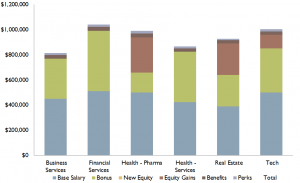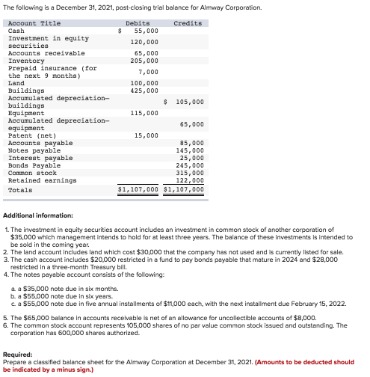You should keep all three of these updated regularly to know how your business is doing, as well as prepare for a potential audit. For more information on when you should close your books, read our article on the exploration of account reconciliations. With Taxfyle, your firm can access licensed CPAs and EAs who can prepare and review tax returns for your clients.
Construction payroll and invoicing
FreshBooks contractor accounting software programs strike the ideal balance between ease of use and functionality. You’ll be able to use it like a pro in no time—no accounting knowledge necessary. FreshBooks also offers mobile apps for both Android and iOS, providing the same functionality as its desktop accounting software. If you run your own construction company, you already know how much time and focus the job takes. Often, bookkeeping and accounting become an added stress, leaving you less time to run the business and raising the risk of mistakes with your accounts.
In depth: Our top construction accounting software picks
- This forms the basis for creating general ledger accounts before posting transactions.
- For pricing, we looked at the starting price for the software and whether the company was transparent with its pricing.
- It’s important to note that, while Procore does offer financial management tools and reporting, it’s more of a project management solution than a true accounting software.
- Its purpose is to enable construction companies to have a better understanding of their financial situation through tracking and recording both expenses and incoming payments.
- While it’s possible to manage your construction accounting on your own, owning a construction company comes with many complexities that may lead to you making costly accounting errors.
All information prepared on this site is for informational purposes only, and should not be relied on for legal, tax or accounting advice. You should consult your own legal, tax or accounting advisors before engaging in any transaction. The content on this website is provided “as is;” no representations are made that the content is error-free. Regular audits of your bookkeeping department help identify discrepancies and ensure compliance with financial regulations. This practice is key to maintaining the financial health of your business and preparing for any external audits. Free up time in your firm all year by contracting monthly bookkeeping tasks to our platform.
- If you can bring the same excellence to your accounting, you’ll begin to see the results of your growth firsthand.
- Construction accounting software rates can start from as low as $17/month or up to $140/month for more advanced plans.
- In this guide, we address some of those challenges and cover the basics of construction accounting.
- Additionally, you gain better visibility and control over your invoicing process, which helps you optimize your cash flow and improve your supplier relationships.
- Most construction workers are paid hourly, so labor costs represent the cost of the hours worked by a particular crew.
Accounting for Restricted Grants
Digitizing your invoice management system https://www.merchantcircle.com/blogs/raheemhanan-deltona-fl/2024/12/How-Construction-Bookkeeping-Services-Can-Streamline-Your-Projects/2874359 allows you to capture invoices electronically, automatically extract data from them, and route them for approval without human intervention. With an automated approval workflow, you can accelerate the payment process and ensure that invoices are approved and paid on time. Additionally, you gain better visibility and control over your invoicing process, which helps you optimize your cash flow and improve your supplier relationships. One of the keys for any business is to keep track of all indirect and direct costs.
Leverage Professional Construction Accounting Software
- Next, the price and length of construction projects make payment scheduling and collection unique.
- NerdWallet’s construction accounting software roundup favors products that have industry-specific features or integrations and prioritize job costing tools.
- So, what are some key things to keep in mind when managing accounts for a construction company?
- It even allows you to invite owners to collaborate on change orders to fully understand what is required by them before you put resources to work.
- As a reminder, your general ledger is where you’ll find all accounting and financial entries.
- However, the more projects you have on the go and the more people that work for you, the more you need to have a reliable bookkeeping process.
Having one account dedicated to your construction business helps streamline your financial processes and makes it easier to track income and expenses. Using Hubstaff’s time tracking app for construction businesses, you can automatically generate time cards for your workers. This ensures payroll receives accurate data for the time workers spend on-site, as well as time spent traveling.
Job costing is a special feature of construction bookkeeping that some find useful. It need not be explained that the costs of each job containing the cost of materials, labor cost, equipment cost, and cost of non-ownership subcontractors are specific. It’s especially useful for small construction companies that deal with longer-term contracts and transactions. In general, a construction business with gross receipts (also known as Business Tax Receipts) over $10 million must use the percentage of completion revenue recognition method for tax purposes. A construction business with gross receipts under $10 million can use the completed contract method on construction projects that last less than two years. They’re only required to use the percentage of completion method for construction contracts that extend over two years.
QuickBooks Online
Construction accounting software can save you time and help keep you organized when managing your building projects. By integrating preconstruction parameters, such as bidding and cost building, contractors can quickly move a project from the prework phase into the project management and building phases. Construction software becomes a one-stop platform for everything from prices to contracts and compliance.



